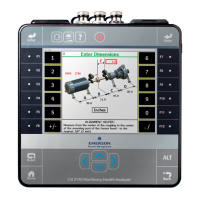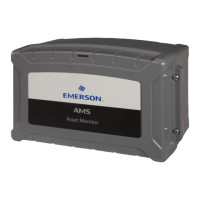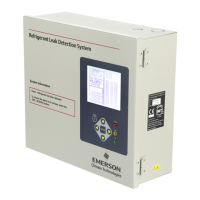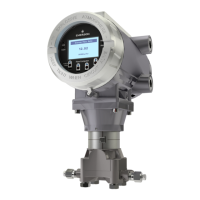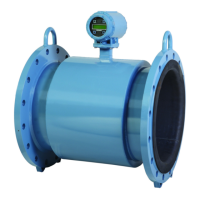Auto 4 Point
With Auto 4 Point, data is acquired at the traditional cardinal positions (0°, 90°, 180°, and
270°). In this method, the laser fixtures' built-in inclinometers are used while the shaft is
rotated, but data is automatically acquired and stored in the Laser Align Application
instead of in the laser fixtures.
The laser fixtures are mounted on a shaft, and the shaft is then rotated so that data can be
taken when the laser fixtures are at the 12 o’clock (0 or 360°), 3 o’clock (90°), 6 o’clock
(180°), and 9 o’clock (270°) positions. The readings are continuously averaged whenever
the laser and sensor are at one of these positions and automatically recorded when the
shaft is rotated to the next position. The averaging process reduces variation from jitter
due to background vibration or from slight changes in the angular position of the laser
fixtures.
Manual 4 Point
With Manual 4 Point, you have complete control over when data is acquired and in which
of the four measurement positions data is acquired. This method is useful when the
machines are not mounted in a true horizontal orientation, rendering the inclinometer
ineffective, or when the clock positions relative to vertical and horizontal base movements
of the machines are nonstandard.
Readings are not continuously averaged whenever the laser fixtures are at one of the
cardinal positions.
7.4.3 Set the mode of operation
1. Activate an alignment job.
2.
From the Laser Align Application main menu, press ALT.
3. Set the mode of operation:
a. For horizontal alignment jobs, press F4 Laser Align Method > F5 Mode to select
Standard or Averaging.
This option is available only for Auto Sweep and Manual Sweep alignment
methods.
b. For vertical and straightness alignment jobs, press F4 Set Mode to select Standard
or Averaging.
Most alignment jobs use Standard mode. In this mode, once the direction of
rotation is defined by the laser fixtures, any previous data stored is overwritten by
any new data acquired at the same angular position.
The Averaging mode allows multiple data sampling to reduce the noise in the data
by averaging all of the acquired values. In this mode, once the direction of rotation is
defined by the laser fixtures, any previous data stored is averaged with any new data
acquired at the same angular position once the laser fixtures is moved at least 20° in
the reverse direction or when a full 360° sweep is performed.
4. Press Enter.
Advanced Laser Alignment
190 MHM-97432 Rev 7
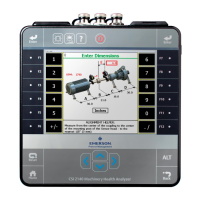
